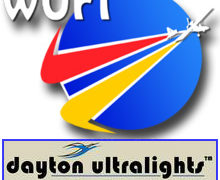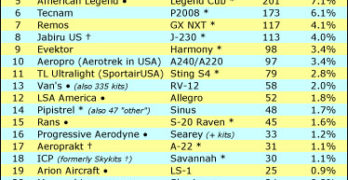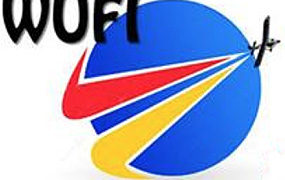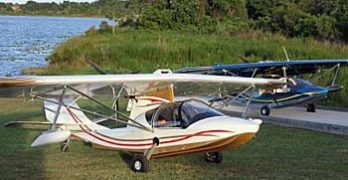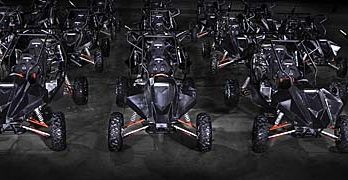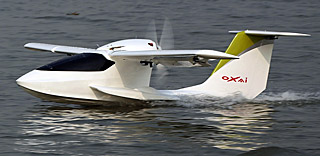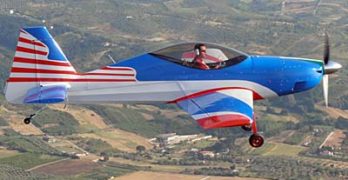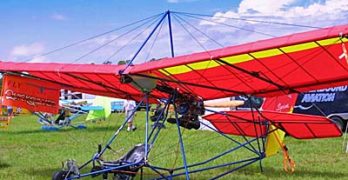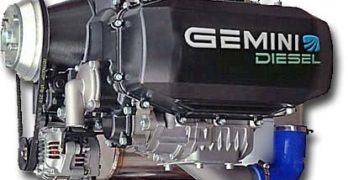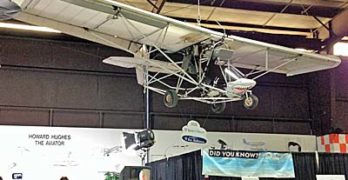It’s already tomorrow (Saturday, October 10th) somewhere. Here in the USA, I write this on Friday the 9th, and tomorrow in America is going to be big, big day for small aircraft owners. As Facebook juggernaut, Paul Lindamood has promoted with multiple Facebook posts per day for weeks, it is nearly time for WUFI … the World Ultralight Fly-in. Actually, that time is now! Whoo hoo!
Since most ultralights are relatively slow flying, sub-87 knot, airplanes (and that’s a good or great thing say enthusiasts including yours truly), it isn’t practical to gather perhaps thousands of ultralights at a single field to fly them all at once. Nor would trying be safe. Yet in the age of social media and Internet communication, it is possible to request that thousands of ultralight owners around the globe prepare their flying machines and get them into the air on the same day.
Search Results for : powered parachute
Not finding exactly what you expected? Try our advanced search option.
Select a manufacturer to go straight to all our content about that manufacturer.
Select an aircraft model to go straight to all our content about that model.
SLSA N-Number Registrations in First Half 2015
The U.S. market for Special Light-Sport Aircraft continues to grow at steady pace, modestly better than the trend for single engine piston certified aircraft as reported by the General Aviation Manufacturers Association for the first half of 2015.
SLSA deliveries in the half-year period totaled 97 units, with 91 of those coming from 15 manufacturers, showing that the famous 80/20 rule still generally applies … more than 80% of the market is supplied by less than 20% of the builders. It also implies the majority of those companies who previously earned FAA acceptance for their LSA models are either quite slow or inactive in the U.S. market.
We’d prefer to describe vigorous growth but the so-named Great Recession seems to be lingering on; at least it appears the much-talked-about recovery has left most of aviation still looking for improved business. Evidence of a still-troubled global economy is even clearer when you consider the wild stock market gyrations of recent weeks.
Virtual Fly-In and Three Fall Shows to Enjoy
Update 8/17/15 AM — Even with almost two months to go, WUFI is growing. Look at the updated map at the bottom; it appears many ultralighters are ready to join the fun on October 10.
“One Day. One Sky. Be a part of it.” That’s the exclamation and invitation from the Dayton Ultralights World Ultralight Fly-In.
What is a virtual fly-in and why is the Dayton group organizing it? “Because the limitations of these aircraft mean it is unlikely all of us around the world will ever get to fly together, but we can all fly the same sky, on the same day everywhere on the planet, making this the first Virtual Worldwide Fly-in!
Why not? People get excited about “flash mobs” and this seems like lots more fun for people who fly. While thousands attend big events like AirVenture and Sun ‘n Fun ultralight enthusiasts only rarely fly from, say, California, to Oshkosh, Wisconsin at 50 mph.
The World of LSA and American Opportunities
Updated 8/21/15 — This article has been updated with a reader comment seen at the bottom.
When the SP/LSA regulation was announced 11 years ago nearly all registered Light-Sport Aircraft originated in Europe. Indeed, the first two accepted as SLSA were the Evektor SportStar and Flight Design’s CT series. For several early years, Europe accounted for more than two-thirds of all LSA brands in the USA.
However, in a decade, a lot has changed.
Now, American companies have had time to shift from kit making (a very different business model) or have developed brand-new aircraft or offer a revised version of an existing model to meet the ASTM standards so they could gain FAA acceptance.
American companies are also starting to make inroads into other countries that accept ASTM standards.
Some countries simply copy FAA regs while others accept the ASTM standards set and then layer on some of their own regulations.
Gutsy-Looking SkyRunner Turned Heads at AirVenture
To many eyes, Icon stole the show at EAA AirVenture Oshkosh 2015. Many other newsworthy announcements were made — several of which I reported on this website — yet Icon’s splashy marketing probably drew the most eyes, just as it does on Facebook. However, thanks to fellow journalist Roy Beisswenger, I was introduced to the high-energy gang at SkyRunner.
I don’t know if “radical” fits the marketing designs of SkyRunner LLC, but their take on the flying ATV or dune buggy takes the genre to a whole new realm. I find myself searching for the right words to describe SkyRunner. Imagine I-Tec’s Maverick but with an attitude. Then wrap your mind around two powerful engines to make this baby go. Maverick looked vaguely like a mild-mannered road car where SkyRunner abandons that image for a Ninja motorcycle look crossed with the baddest four-wheeler ATV you ever saw.
Another LSA Seaplane … Another Flying Car
Some ideas appear irrepressible. One is LSA seaplanes. An entire flock of these are coming including a couple new ones I just discovered (and I’m one of those people constantly sniffing about for new light aircraft). The Oxai is the first such Chinese entry I’ve found but they are serious enough to bring ASTM expert Adam Morrison to China for a special one-company-only seminar about the industry consensus standards used to gain government agency acceptance of this new class of airplanes. A principal of consulting firm Streamline Designs, Adam is one of the industry’s leading experts and presents a training class on behalf of ASTM.
More on the Oxai M2 LSA seaplane later. For now, I want to write about a flying car … or maybe I should say “flying hotrod.” Recently I described the stylish Aeromobil from Slovakia. Now consider the gutsy-looking, off-road-capable SkyRunner from merry old England.
Is FAA Falling Behind Other National CAAs?
Let’s set the way-back machine to two dates and examine the actions of our good friends at FAA. One date was September 1982. Another date was September 2004.
Date #1 was the time when FAA announced Mike Sacrey and team’s remarkable Part 103. This rule has lasted for 33 years and continues to hold interest (see earlier article on the subject). Date #2 was when FAA announced the SP/LSA rule engineered by Sue Gardner and her team. I continue to applaud their initiative for both simplified rules where they stepped far back and let the market do its magic. Both have increased the freedom of pilots to fly what and how they prefer. Kudos, FAAers!
Part 103 is strictly single seat since the two-seat “103 trainers” were forced into ELSA status. Does a market exist for one-place aircraft? I always cite this survey result from AOPA. After many years of asking, the big member group determined the average occupancy of a GA aircraft was 1.6 persons.
Quicksilver’s 103 Sprint Offers Potent Powerplant
You could say 15,000 aircraft buyers can’t be wrong and you’d be right. Quicksilver, in several various corporate iterations, has indeed sold 15,000 aircraft kits for its whole line including what they call the MX series and the GT series. Going back to the early 1980s — or even earlier when the company was a hang glider producer under the namer Eipper Formance — the company has made so many models I could nearly fill a post with the names, so I won’t try to list them all. Suffice it to say this is one of the most prolific airplane companies since the Wright brothers first flew.
Today, the line up includes the aircraft in the nearby photos called Sprint. It’s a single seater, now positioned as the MX-103. As the company notes on their slickly upgraded website, “[We are] launching the MX 103 a legal ultralight with 50 horsepower engine for $18,900 fully assembled.” They note that MX 103 is based on the MX Sprint that has a long track record of safety and ruggedness in an open air flying machine.
Is Diesel Power for LSA Superior? Yes!
“So, it looks like Rotax has finally got some worthy competition,” was a comment I received as I walked into the Sun ‘n Fun press headquarters work room. The observation came from a fellow journalist at one of the big aviation magazines. He is aware Rotax dominates the light aircraft market with an estimated 75-80% of all engine installations, even higher overseas. Who is going to give the big Austrian engine manufacturer some competition?
Superior Air Parts got started back in 1967 making components for certified engines such as Lycoming but long ago branched into their own engine line. Companies like Arion Aircraft is using an Experimental Superior XP powerplant for their new EAB speedster similar to but quite a bit faster than their LS-1 Light-Sport model. Like Arion, many already knew of the gasoline engines from this Texas company, but I knew something was up when I was approached at Sebring about a new project.
Sun ‘n Fun 2015: Part 103 Ultralights Are Hot!
Part 103 ultralight activity was not the news I expected to report from Sun ‘n Fun 2015, certainly not as my first report. After an intense week shooting video interviews at Sun ‘n Fun 2015, I am impressed to report that Part 103 is much more than alive and well. For those that may have missed this unique category, Part 103 ultralight vehicles (FAA’s deliberate wording) are single seat flying machines of varying description that need no medical, not even a pilot license, no N-number registration, and can be sold ready-to-fly. The entire FAA regulation for them can be printed on the front and back of a single piece of paper.
Adding to the charm of rarely having to interact with a government agency in order to have some fun in your airplane are a couple similar efforts in Europe. Germany has its 120-kilogram class (264 pounds) and England has its SSDR category (Single Seat De Regulated).
- « Previous Page
- 1
- …
- 9
- 10
- 11
- 12
- 13
- …
- 45
- Next Page »


